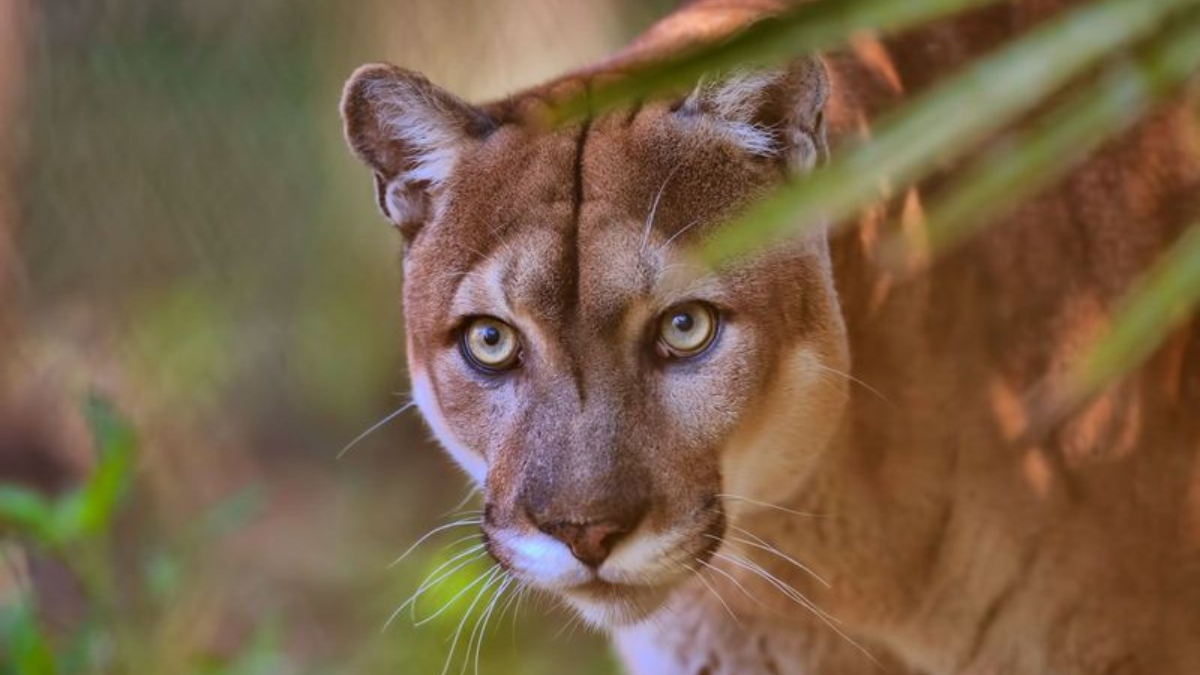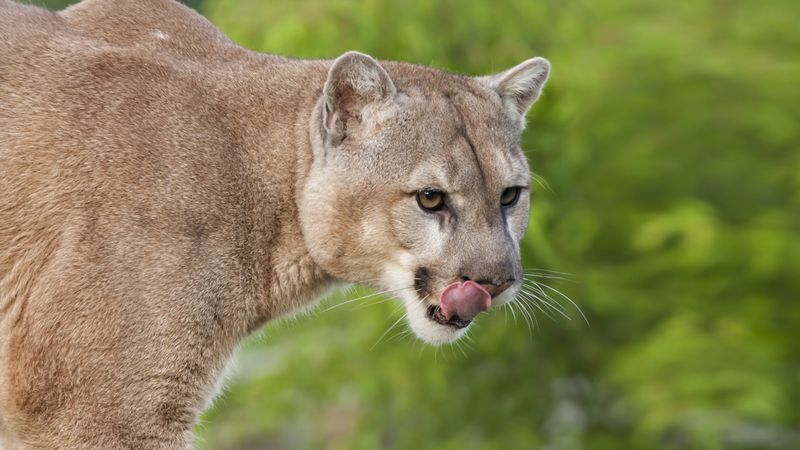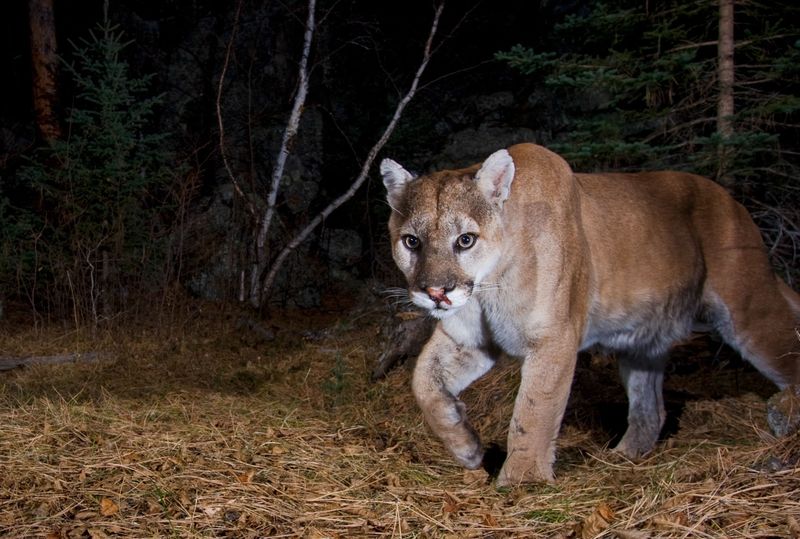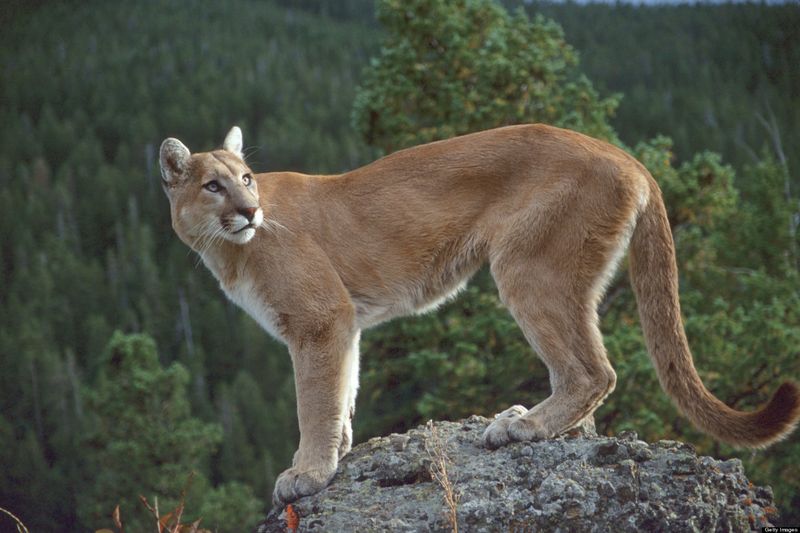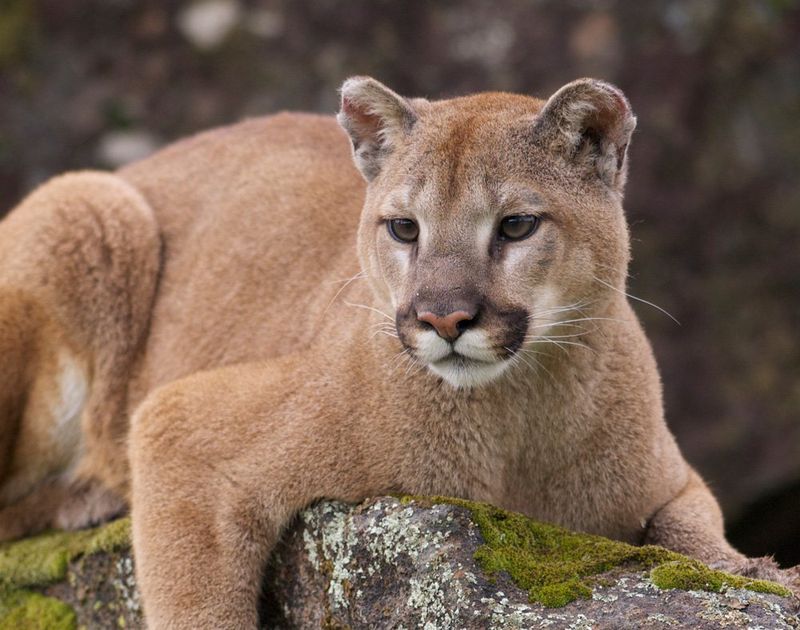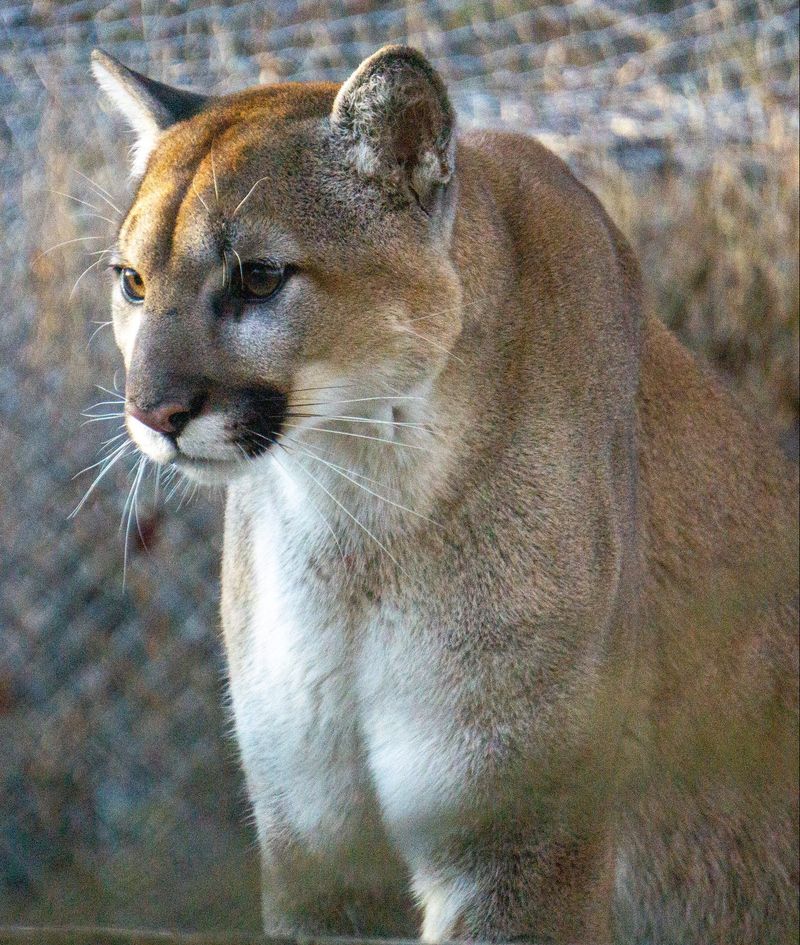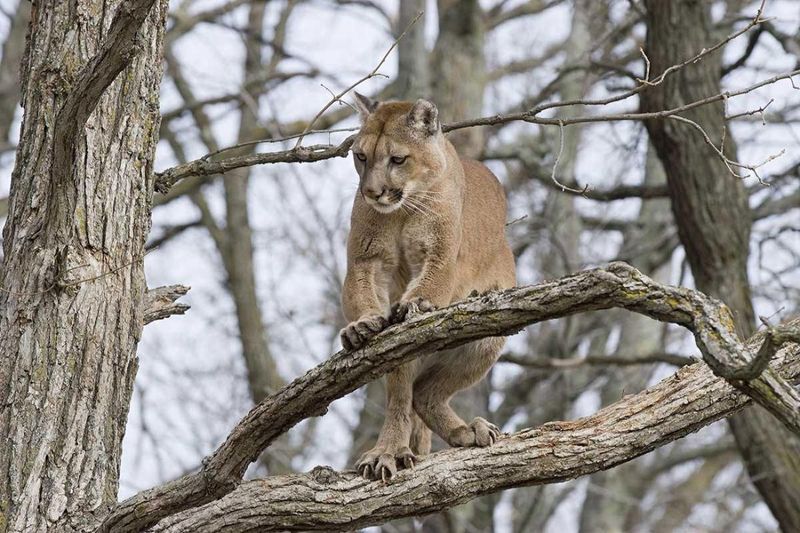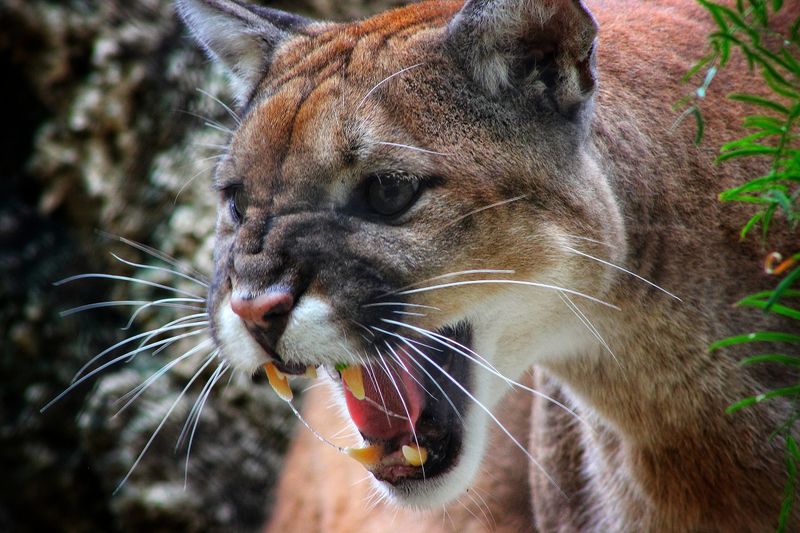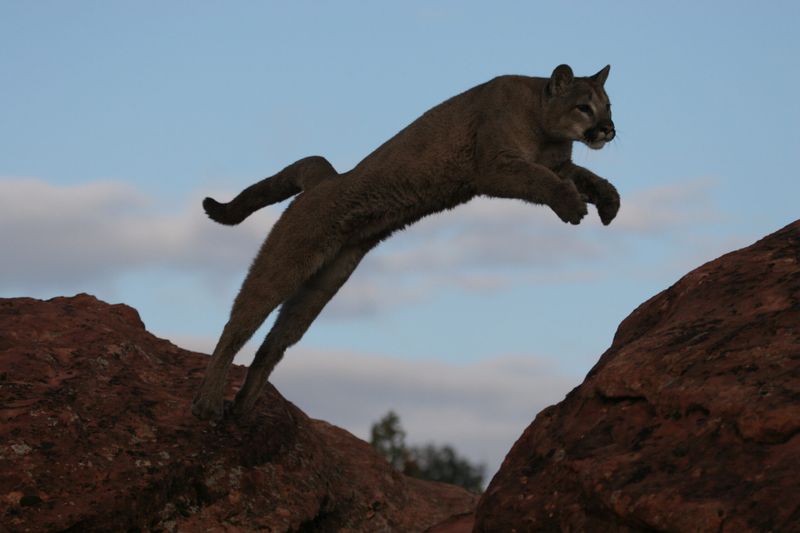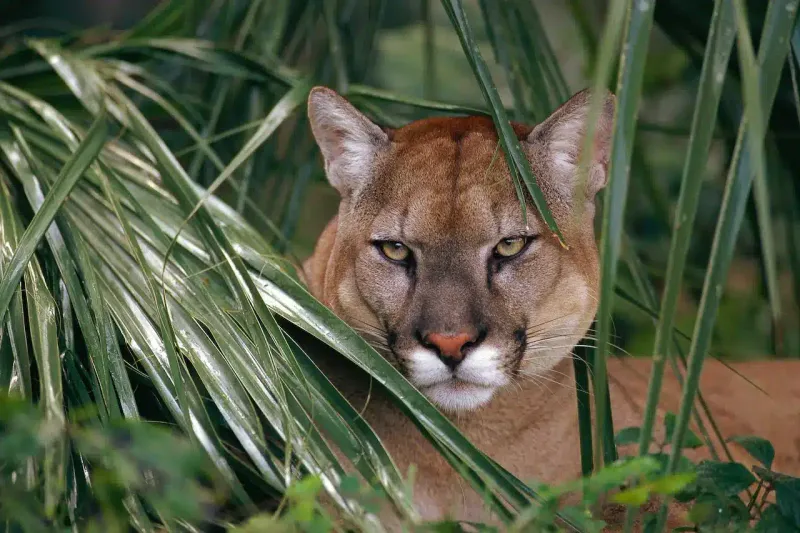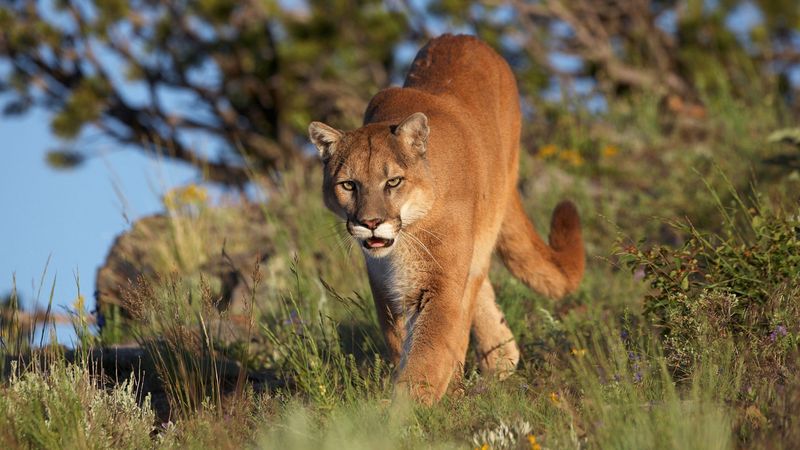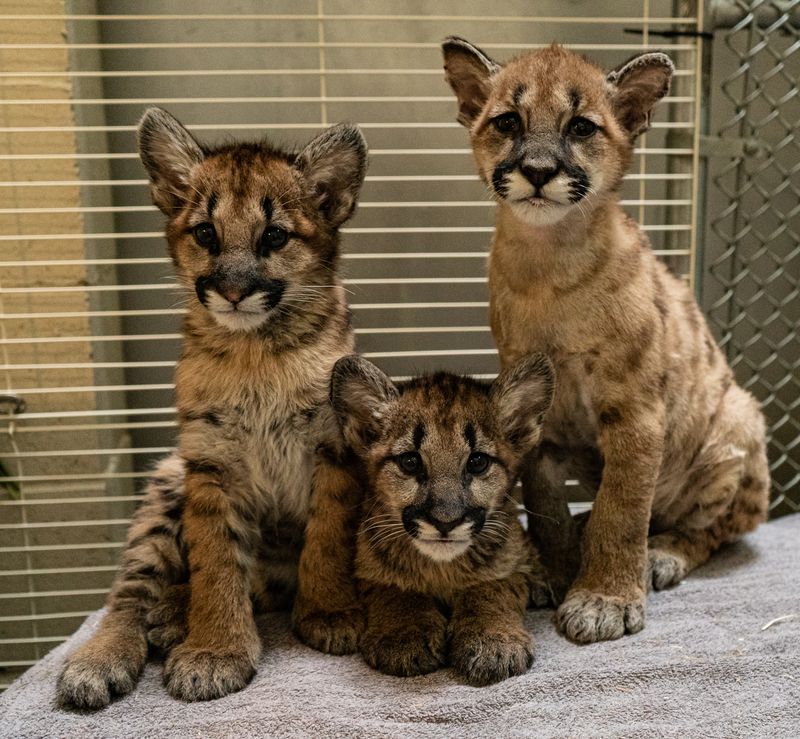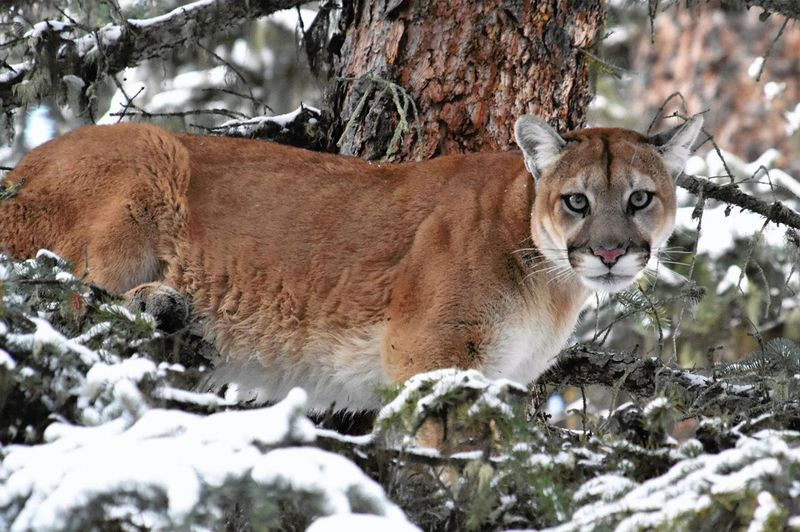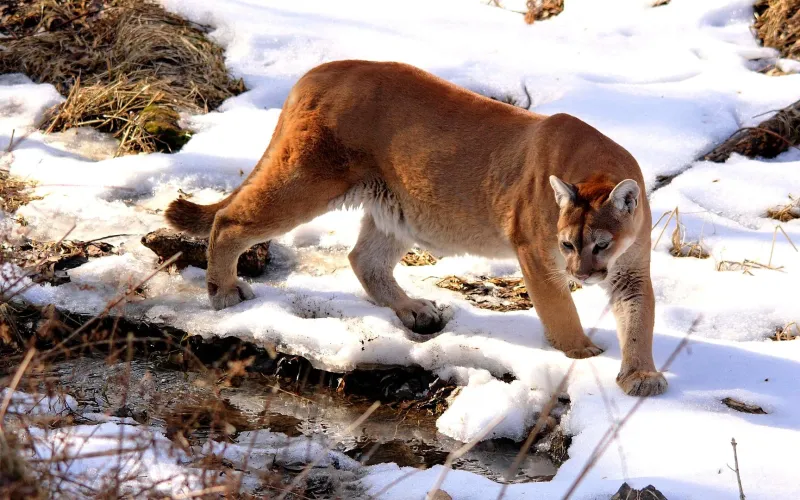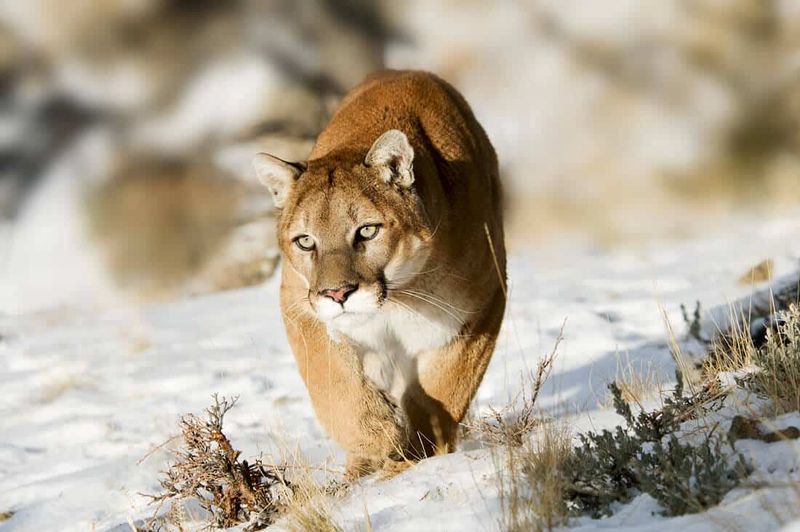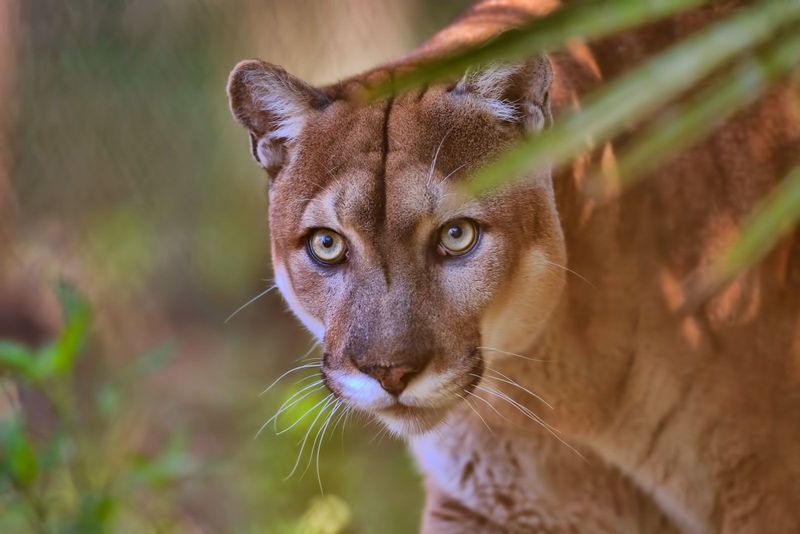📖 Table of Content:
- 1. Silent Stalkers
- 2. Range and Territory
- 3. Elusive Big Cats
- 4. Adaptable Hunters
- 5. Socially Solitary
- 6. Master Climbers
- 7. Vocal Varieties
- 8. Impressive Jumpers
- 9. Diverse Diet
- 10. Keen Senses
- 11. Cub Development
- 12. Habitat Diversity
- 13. Speed and Agility
- 14. Conservation Challenges
- 15. Role in the Ecosystem
Cougars, also called mountain lions or pumas, are among the most captivating big cats in the animal kingdom. Their impressive adaptability to diverse environments makes them stand out in the wild. These solitary and elusive creatures continue to intrigue wildlife enthusiasts and researchers across the globe.
Found across a vast range of habitats throughout the Americas, cougars are masters of stealth and survival. Their ability to thrive in such varied regions showcases their remarkable versatility. Despite their widespread presence, many aspects of their behavior and biology remain a mystery to many.
From their hunting techniques to their social dynamics, cougars lead fascinating lives that are often shrouded in secrecy. These big cats are not only skilled predators but also possess unique traits that contribute to their success in the wild. Discovering these lesser-known facts brings a deeper appreciation for the cougar’s role in nature.
1. Silent Stalkers
Cougars are renowned for their ability to move silently through their environment. This stealthy behavior makes them effective predators, capable of sneaking up on prey without detection. Their muscular build and padded paws allow for quiet movement, crucial when stalking deer or smaller mammals. Cougars rely on ambush tactics, using cover-like rocks and vegetation to close in on their target.
This silent approach is vital for their survival in the wild, as it maximizes hunting success and minimizes the risk of injury. Their stealth not only aids in hunting but also enables them to avoid potential threats.
2. Range and Territory
With territories that span from 10 to 370 square miles, cougars hold some of the largest ranges among wild cats. Their territory size is determined by the availability of prey and the surrounding terrain. These solitary animals are highly protective of their space, using markings like scratches and scents to signal boundaries to other cougars.
This behavior helps maintain a stable population by reducing conflicts. Male cougars typically have larger territories that may overlap with several females, facilitating mating opportunities. Understanding cougars’ territorial habits is essential for conservation and managing human-wildlife interactions.
3. Elusive Big Cats
Known for their elusiveness, cougars often steer clear of human interaction. Their sharp senses and solitary nature enable them to stay hidden in the wild. Preferring secluded areas with dense vegetation, they can hunt and thrive undisturbed, using their stealth as a strategy to avoid threats, including humans.
Despite their wide range, encounters with cougars are rare, contributing to their mysterious reputation. Their ability to blend into various landscapes, from forests to deserts, helps them thrive across diverse regions. For wildlife enthusiasts, spotting a cougar in the wild is a rare and memorable experience.
4. Adaptable Hunters
Incredibly adaptable, cougars thrive in various environments, from South America’s rainforests to the snow-covered mountains of North America. They tailor their hunting strategies to the specific challenges of each landscape. Their diet is diverse, mainly focused on deer, but they also hunt smaller mammals and occasionally insects when resources are scarce.
This adaptability ensures their survival in regions with fluctuating prey availability. Moreover, cougars exhibit remarkable agility and strength, able to leap long distances and climb trees if required. These traits make them versatile predators, capable of exploiting a wide range of habitats.
5. Socially Solitary
Although cougars are primarily solitary animals, they exhibit complex social behaviors, especially during mating season. Males and females come together briefly to mate, with females raising the young alone. Interestingly, mothers may share kills with their cubs or other related females, suggesting a level of social cooperation.
Communication among cougars includes vocalizations and scent markings, which play crucial roles in reproduction and maintaining territory. Despite their solitary lifestyle, these interactions highlight a sophisticated social structure. Understanding these dynamics provides insight into their behavior and helps inform conservation strategies to protect their populations.
6. Master Climbers
Cougars are exceptional climbers, using their powerful limbs to scale steep terrains and trees with ease. This skill provides them with strategic advantages, such as escaping predators or accessing prey. Their retractable claws offer excellent grip, making climbing an efficient escape or hunting tactic.
In addition to climbing, cougars exhibit impressive leaping abilities, capable of jumping over 20 feet in a single bound. These physical traits are not only fascinating but essential for survival, allowing them to navigate their environment effectively. Whether in pursuit of prey or avoiding danger, climbing is a critical part of a cougar’s life.
7. Vocal Varieties
Unlike other big cats, cougars cannot roar, but they possess a diverse range of vocalizations. These sounds include purring, hissing, and a unique scream often compared to a woman’s cry. Each vocalization serves specific purposes, such as communication during mating or signaling distress. Cougars also use chirps and whistles to communicate with their young, highlighting their complex social interactions.
This vocal diversity is essential for maintaining territory boundaries and mother-cub relationships. Understanding these vocal patterns helps researchers learn more about cougar behavior and social structures. Despite their silent reputation, cougars’ vocal abilities are fascinating and multifaceted.
8. Impressive Jumpers
Known for their impressive jumping abilities, cougars can leap great distances both horizontally and vertically. This athletic prowess is crucial for hunting, allowing them to ambush prey from a distance or escape threats swiftly. They can jump as high as 18 feet and cover up to 40 feet in a single leap. Such agility is attributed to their muscular hind legs and flexible spine, which provide the necessary force and balance.
These jumps are not only useful in pursuit of prey but also enable cougars to navigate challenging terrains efficiently. Their remarkable jumping skills are a testament to their physical adaptability.
9. Diverse Diet
Primarily feeding on deer, cougars are also opportunistic, hunting smaller mammals, birds, and reptiles when necessary. Their adaptability in diet helps them survive in different habitats by adjusting to prey availability. Their hunting method relies on stalking their prey with patience, then ambushing with pinpoint precision.
Their success as hunters is also due to their acute senses, particularly their keen eyesight and hearing. By understanding their dietary habits, conservationists can better manage cougar populations and mitigate potential human-wildlife conflicts.
10. Keen Senses
The survival of cougars relies heavily on their acute senses, particularly their keen eyesight. They are able to spot prey from far away, even in low-light conditions. Their sensitive hearing further enhances their hunting abilities, allowing them to detect subtle sounds from both prey and potential dangers.
The combination of these senses allows cougars to navigate their environment with precision and stealth. Moreover, their sense of smell, though not as developed as some other predators, still plays a role in communication and territorial behavior. These keen senses are integral to their adaptability and success in diverse habitats.
11. Cub Development
Born blind, cougar cubs rely on their mother for everything during their first few weeks of life. They stay concealed in dens, safe from predators, until they are ready to explore. As they grow, their eyes open, and they start to venture into their environment, always under their mother’s watchful care.
This period of development is crucial, as they learn essential hunting and survival skills through play and observation. The mother provides nourishment and protection, gradually introducing them to the art of hunting. By the time they are ready to leave her side, they are equipped with the knowledge needed to survive independently in the wild.
12. Habitat Diversity
Cougars are known for their ability to adapt to a wide range of habitats, from arid deserts to lush forests and mountainous regions. This adaptability is a significant factor in their widespread distribution across the Americas. They prefer areas with ample cover and prey availability, which are crucial for successful hunting and avoiding human encounters.
Human encroachment and habitat fragmentation pose significant challenges, but cougars continue to adjust by moving into urban fringes and maintaining their territories. Understanding their habitat preferences and adaptability is vital for conservation efforts, ensuring these magnificent animals continue to thrive in the wild.
13. Speed and Agility
Not just expert climbers and jumpers, cougars are also incredibly fast and agile. They can reach speeds of 50 miles per hour in short bursts, which is crucial when they need to ambush prey. Their speed and stealth, combined with their ability to maneuver through rough terrain, make them highly skilled predators.
These physical attributes are essential for catching prey and evading potential threats. Cougars’ ability to accelerate quickly and change direction with precision underscores their role as apex predators in their ecosystems. This speed and agility are key to their hunting success.
14. Conservation Challenges
Despite their adaptability, cougars face significant conservation challenges, primarily due to habitat loss and human-wildlife conflicts. As human populations expand, cougars’ natural habitats shrink, leading to increased encounters with people. These interactions often result in negative outcomes for cougars, including hunting or relocation.
Conservationists emphasize the importance of preserving natural habitats and creating wildlife corridors to facilitate safe movement. Public education on coexisting with cougars is also crucial, as it helps reduce fear and misinformation. By addressing these challenges, we can ensure the long-term survival of cougars in the wild, maintaining ecological balance.
15. Role in the Ecosystem
As apex predators, cougars are vital in maintaining the health of their ecosystems. By regulating herbivore populations, particularly deer, they prevent overgrazing and support plant diversity. This natural control has a ripple effect, benefiting other wildlife and enhancing the overall balance of the ecosystem.
Their role extends beyond predation, as they also scavenge, providing food for other animals. Understanding the ecological importance of cougars underscores the need for their conservation, highlighting their contribution to biodiversity and the stability of natural habitats.
